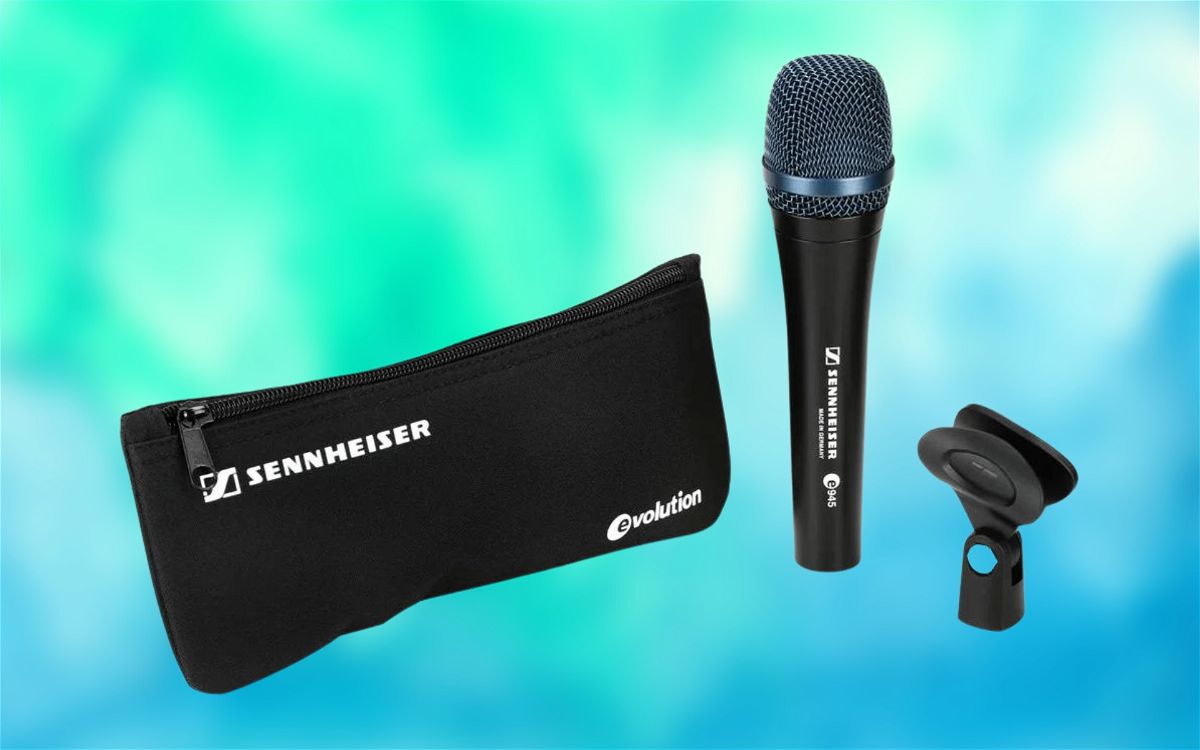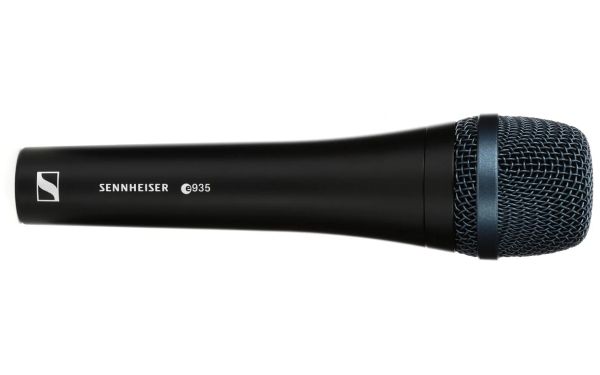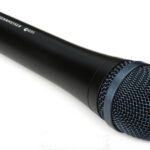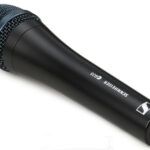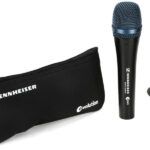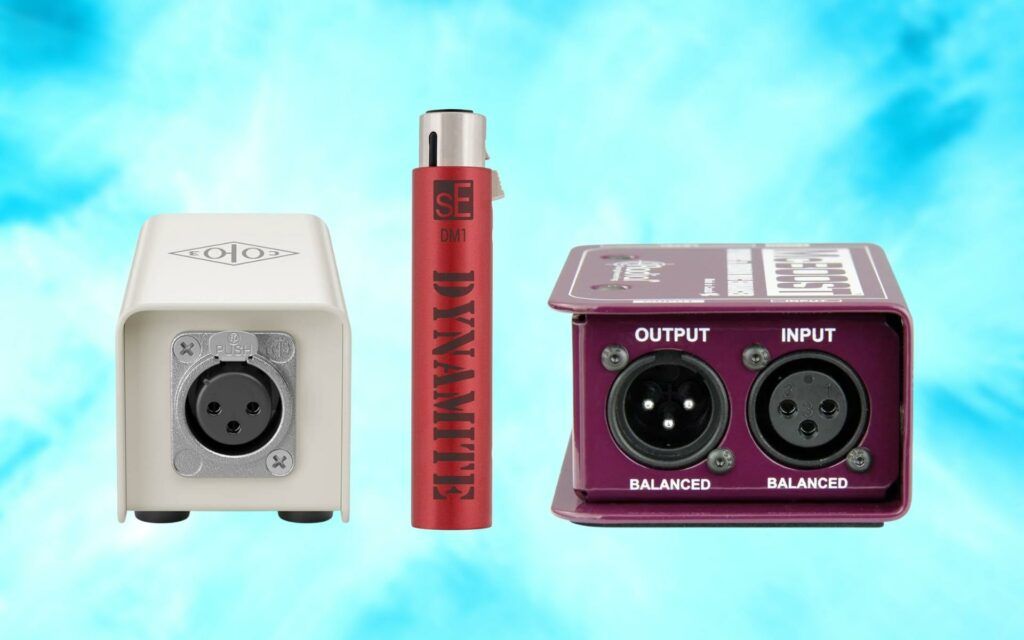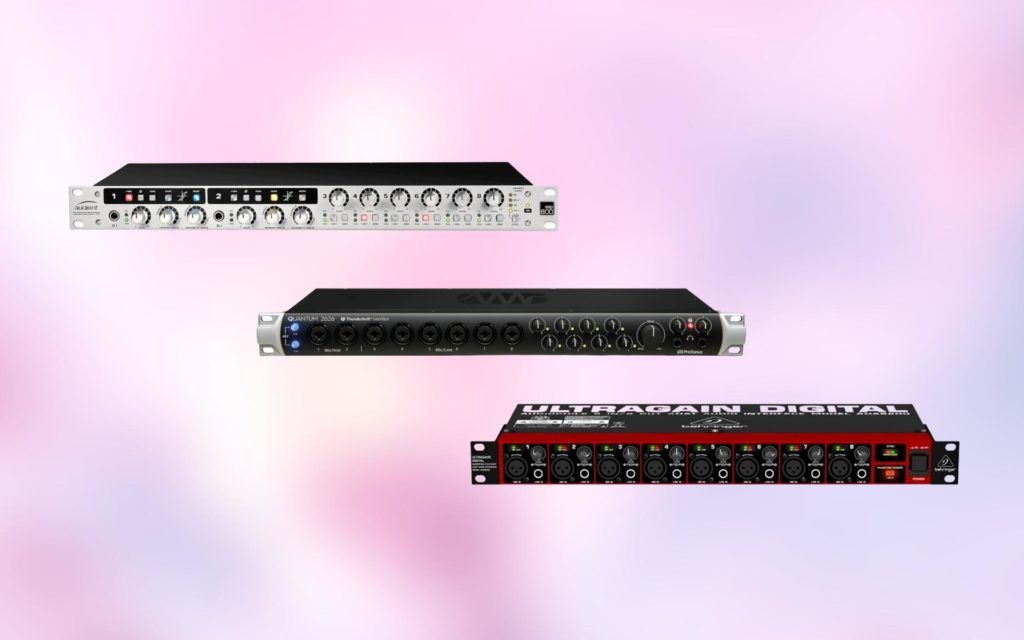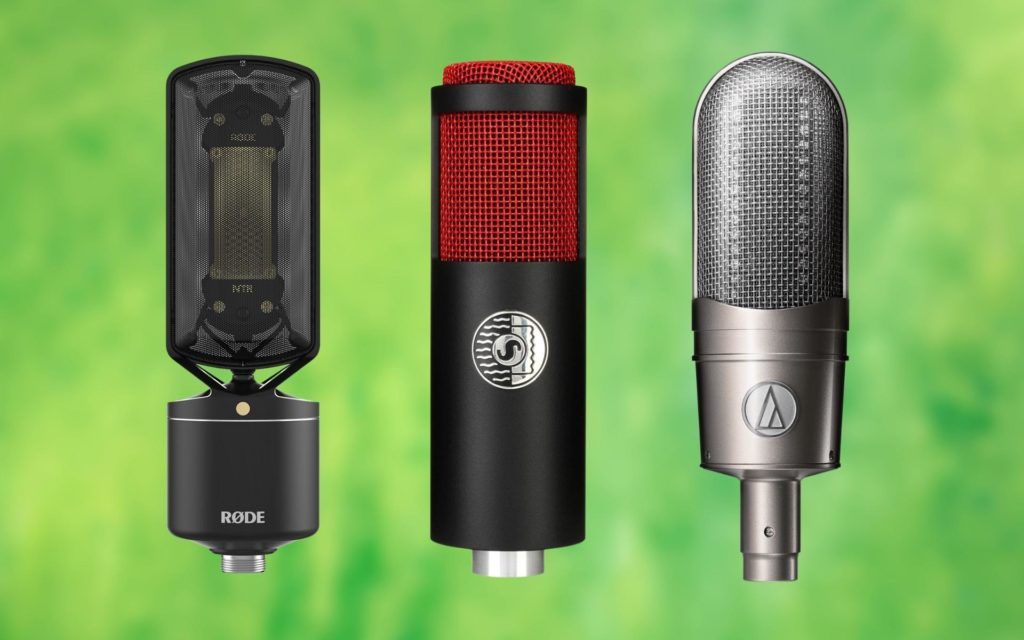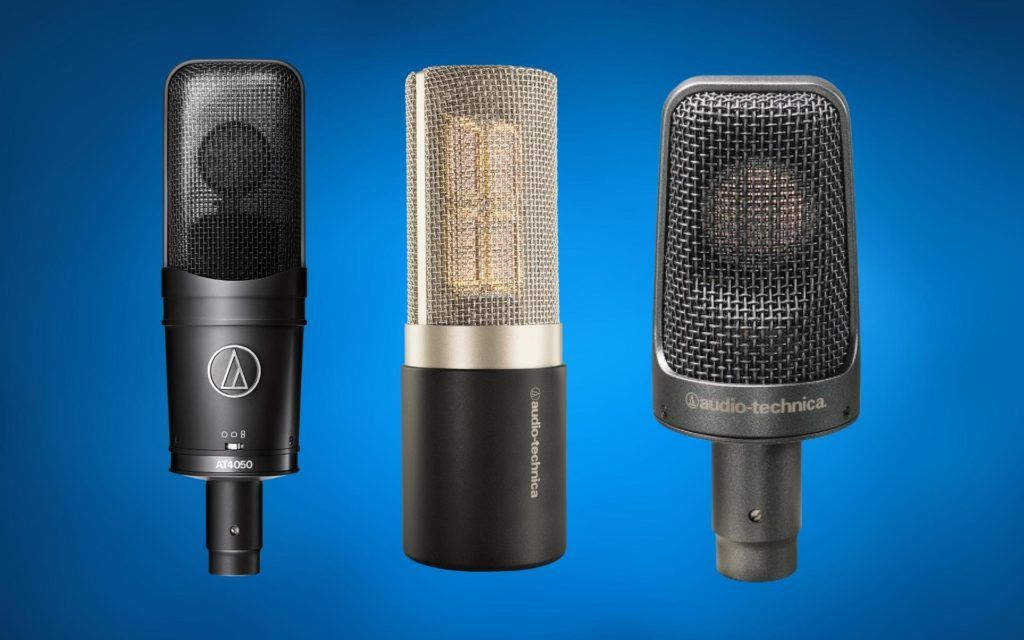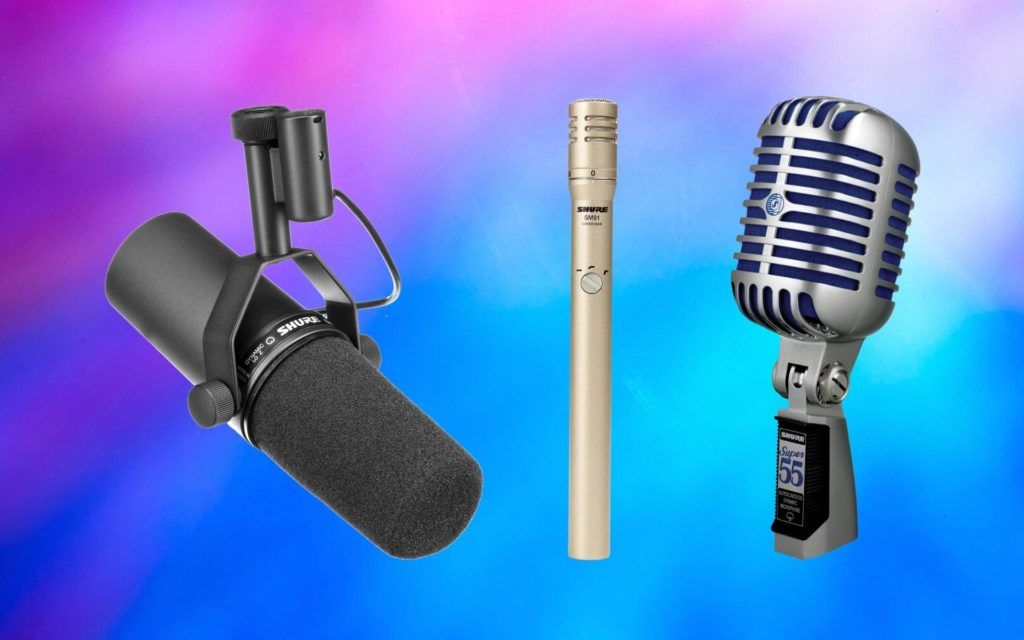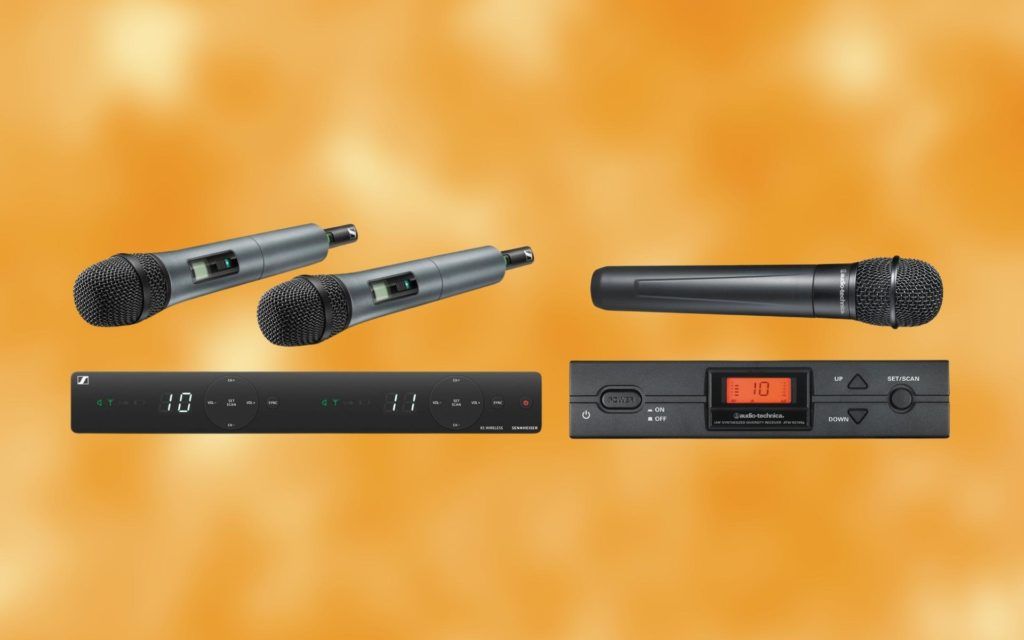We review products independently and our recommendations are genuine. If you purchase through links on our site, we may earn an affiliate commission. Learn More
The Sennheiser E935 is a great choice for singers who need to project their live vocals with clarity and power. Its workhorse design makes the E935 a worthy investment, especially considering its affordable price, as it is very likely to last you for a long time, even if you perform frequently.
Sennheiser E935
Key Features
- Cardioid pickup pattern
- Shock-mounted capsule
- 40Hz-18kHz frequency response
- Neodymium ferrous magnet
- Falcon ring
- Hum-reducing coil
90/100
Sennheiser E935 Gallery
The Sennheiser E935 is a rugged dynamic microphone predominantly designed for live vocals. With a cardioid polar pattern, this mic focuses on the singer’s voice while minimizing spill from other instruments or sounds onstage.
Also, compared to most other dynamic vocal mics I’ve tested, its performance in the studio was impressive.
In this E935 review, we’ll take an in-depth look into this microphone’s features and performance, to help you make an informed buying decision. Read on to learn more!
Live Vocals
The E935 is specifically built for live vocals, which is evident in every aspect of the mic’s design. Although it can be used on a microphone stand, this mic is best suited to handheld vocal performances.
It is solidly built but not overly heavy, so it won’t impede your ability to move around on stage.
While many live vocal mics are designed with a specific voice type in mind, Sennheiser has made the E935 a versatile all-rounder, which can project lower vocal styles as effectively as high-pitched, falsetto vocals.
This makes it a good investment for music venues, or open-mic events where many different singers are likely to perform.
One of the key aspects of the E935 which makes it so well suited to live vocals is its ability to suppress feedback.
This problem can ruin a performance, so ensuring that you do everything to keep unwanted noise at bay is essential, and this Sennheiser dynamic microphone will help you to do so.
The feedback rejection offered by the Sennheiser E935 is on par with many of the most popular, high-end dynamic microphones available, which is impressive considering the affordability of this mic. If you use in-ear monitors, this mic will ensure minimal interference in your earphones.
The cardioid polar pattern effectively allows sound to enter the capsule from the front while rejecting it from the back. This is useful for blocking out any sounds from guitar amplifiers, drum kits, or stage monitors and ensuring a clean vocal projection when performing live.
Build Quality
One thing that is instantly noticeable when you take the Sennheiser E935 out of its box is its rugged and roadworthy build quality.
This is to be expected, as Sennheiser has built a reputation for manufacturing robust recording and live sound equipment over the past few decades.
For a live dynamic vocal microphone, the E935 isn’t too heavy. It weighs 0.33kg and has a solid metal housing that is tasked with protecting the important inner components such as the capsule, wires, and magnet.
The nature of live performances means that equipment will inevitably be bumped and knocked, or even dropped at some point. This is why it’s so important to choose a vocal microphone that won’t be easily damaged by the wear and tear of gigging, rehearsing, and transporting.
Like other popular dynamic vocal mics, such as the Shure SM58, the Sennheiser E935 is designed for longevity.
When we compared the e935 vs SM58 in terms of durability, both mics feel substantial and resilient and are highly unlikely to break due to being moved around or accidentally dropped once in a while
The grille installed on this microphone is also highly robust and does a great job shielding the inner parts from damage. If the mic is dropped or the mic stand is knocked over, the grille is likely to absorb a lot of the impact so that the damage is limited.
Additionally, the 3-pin male XLR connector installed on the microphone is solid, so removing and connecting the cable won’t cause it to bend or break.
Sound Quality
Regardless of how impressive a microphone’s physical attributes are, this doesn’t mean a lot unless the sound quality offered is also of a high standard.
The E935 delivers on both fronts, with its crisp, accurate projection of all vocal styles and tones.
A large reason for the microphone’s sound quality is its deliberately shaped frequency pattern, which highlights all of the most common frequency bands of the human voice. Sennheiser has avoided making specific frequencies too prominent, which is why this mic is so versatile and suitable for so many styles of vocals.
The upper midrange and treble frequencies produced by this microphone a clear and bright sounding without being too harsh.
This means that female vocals, head voices, or falsetto ranges can be heard with precision when the E935 is used onstage.
Brightness is one of the most important aspects of live vocals because many of the other instruments in a band take up the bass, lower-mid, and midrange frequencies.
If a vocal mic sounds too dark, this could cause the singer’s voice to get lost in the mix, which leads to an overall muddy sound.
The Sennheiser E935 has a shock-mounted capsule, which is designed to minimize the sensitivity it has to unwanted noise. In turn, this has a positive impact on the clarity it produces, as handling noise is unable to take attention away from the lyrics and melodies that are sung by the vocalist.
Furthermore, the frequency response of this microphone is extensive. While it doesn’t offer the range that a condenser vocal mic would, the E935 spans from 40Hz-18kHz, which is ideal for projecting the vast majority of vocals styles in a live setting.
Polar Patterns & Components
Microphones are only as good as the various components that they are made up of. It’s common for manufacturers to use lesser quality parts on affordable mics to keep the cost to a minimum.
Despite being very reasonably priced, the E935 boasts a variety of impressive components which enhance its performance considerably.
Firstly, Sennheiser has used a single polar pattern design rather than installing several switchable polar patterns. This allows them to focus on ensuring the E935’s cardioid polar pattern is as effective as possible.
Cardioid is the most commonly used polar pattern on vocal microphones, regardless of whether they are of the dynamic or condenser variety. It is popular due to its high sensitivity to any sound that is directed towards the front of the capsule, which ensures that vocals can be picked up.
The E935 rejects any sound that comes from the rear of the capsule and allows minimal sound to enter from the sides. This focused directionality is ideal for live vocal mics, as it reduces the chance of spill from other loud sound sources, such as instruments, amps, or crowd noise from being amplified.
Sennheiser has also installed a special type of coil within the microphone, which reduces electrical interference and prevents humming sounds from being present in the signal.
To ensure that the E935 remains stable regardless of the temperature or environment it is used in, a neodymium ferrous magnet has been used. This considerably improves the overall durability of the mic.
Versatility
First and foremost, the Sennheiser 935 is a live vocal microphone. There’s no denying that it performs best for this purpose, and using it in any other way will limit its effectiveness.
Nevertheless, all microphones can be used for multiple purposes. There’s no “right or wrong” approach when it comes to using microphones, particularly for recording. Many musicians and recording engineers have accidentally stumbled upon an interesting sound by using the “wrong” mic for a certain purpose.
The E935 has a wide frequency response, meaning it has no issues capturing a range of acoustic and amplified instruments.
It can handle the high SPL of an electric guitar amp and is a good option if you want to capture a crunchy, distorted tone.
It’s also possible to use this Sennheiser microphone to record drums, particularly snares and hi-hats. This is because it highlights the prominent frequencies of these drums, and won’t pick up too much sound from other directions so that you can mix them individually without needing to use a heavy noise gate.
In terms of the E935’s live sound versatility, the mic could be placed in front of a guitar amplifier on stage. It is slightly less suitable for this than other dynamic mics like the Shure SM57, but some may prefer the slightly brighter tone that it produces.
Using this microphone with low-end instruments such as bass guitar or kick drum isn’t advised unless you’re looking for a very specific, midrange-heavy sound. The frequency response begins at 40Hz, so you miss out on the very bottom-end of these instruments.
Verdict
The Sennheiser e 935 has been in production since 2003, which illustrates its quality and popularity.
While there have been some adjustments made to the microphone’s design since then, its ruggedness and reliable performance are two consistent qualities that have remained.
One of the standout aspects of this microphone is its ability to keep noise issues to a minimum. If live vocals are tarnished by electronic hum, buzzing sounds, or unwanted spill from other instruments, this can completely ruin a performance. Therefore, Sennheiser’s commitment to combating these issues is much welcomed.
Another thing that impressed me about this microphone is its build quality. Handheld vocal mics need to be able to withstand wear and tear, and this Sennheiser E935 vocal mic feels like it can handle being used extensively.
The solid metal chassis protects the important inner components, so you can rest assured that a few bumps and scrapes won’t cause this mic to stop working.
Sennheiser has also generously included a 10-year warranty with the E935 microphone, which is proof of the company’s confidence in its build quality and longevity.
Finally, this microphone can also be a useful addition to your recording setup and can be used to capture acoustic or amplified guitars, drums, and more.
What Comes In The Sennheiser E935 Box?
The Sennheiser E935 comes with everything you need to start using it for live performances or recording. Included in the box with the mic is the following:
- E935 microphone
- MZQ 800 clamp
- Carry pouch
- User manual
Sennheiser E935 At A Glance
Pros
- Perfectly suited to live vocals, regardless of voice type or tone
- Rugged construction that is built to last a long time
- Successfully prevents unwanted noise from being amplified
- Can also be used for recording vocals or instruments
Cons
- Best suited to handheld performances rather than being on a mic stand
- Not suitable for recording kick drum or bass

